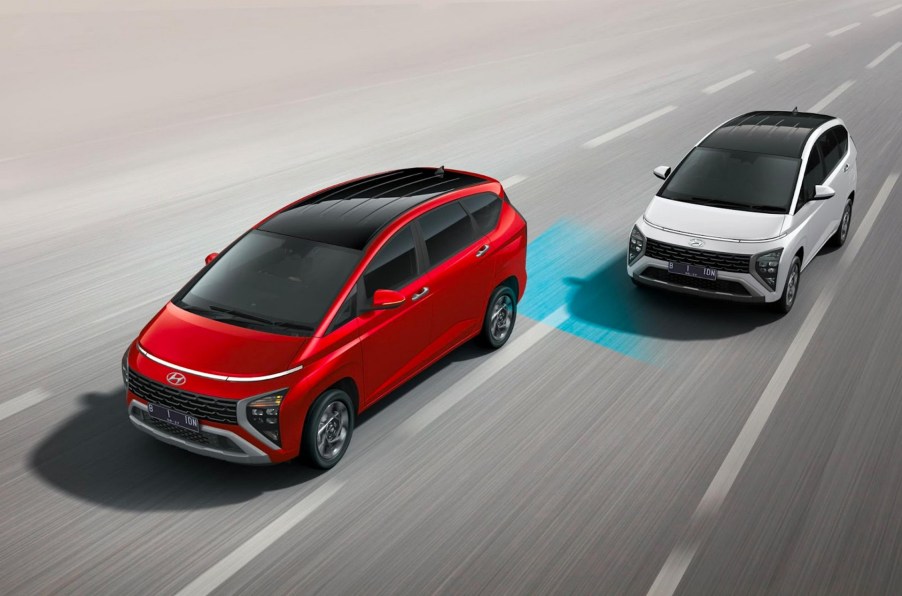
Hyundai Stargazer 3-Row Minivan: Will It Come to the U.S.?
Hyundai keeps hitting home runs. And now, with the just-released Stargazer, it is overwhelming the minivan segment. Last year, it released its futuristic Staria minivan, which set a new direction for what a minivan is. Now, with the Stargazer, it is trying to capture the entire range of the three-row minivan market. The big question is, “Will it come to the U.S.?”
There were high hopes last year when the Staria debuted that it would make it to America. That’s because its design and features were compelling, making a break from the boring offerings other manufacturers produce. Unfortunately, Hyundai doesn’t seem to have its sights set on a U.S. launch. The Stargazer debuted in Indonesia, its main market for now, which is also where it will be made.
Is the Hyundai Stargazer be a fresh entry for the U.S.?

But with the smaller three-row Stargazer, we again are looking at an interesting package that seems right for the U.S. minivan market. But so far, there doesn’t seem to be any movement for Hyundai to bring it to our shores. Though a bit more of a tame design than the Staria, it features many elements of the larger van we like.
Like the front LED light bar, which is a knock-off of its bigger brother. The Hyundai boomerang headlight theme predominates the front. At the rear, the boomerang taillights tie in with the front, looking more like those on the Hyundai Bayon. They dominate the rear, with the rear window and tailgate being designed around them.
Would a van without a sliding cargo door sell here?

Overall, the square wheel openings and sharp body sculpturing are a bit more common than what is seen on the Staria. Interestingly, the minivan has no sliding doors, which have been a fixture of vans for decades. Instead, a traditional car door allows access for passengers or easy cargo loading on either side. Was this a mistake by the product planners? We’ll have to see how much effect this feature, or omission, has on buyers.

The three-row offering means room for seven passengers. The cargo capacity with all of the seats is 7.1 cubic feet. With the third-row seats removed, that number jumps to 20.7 cubic feet. The requisite tables and cupholders are all there, as we’ve come to expect in this segment. There is an eight-inch touchscreen and a 4.2-inch screen for the instruments. And the safety features you would expect are all accounted for.
Overall the van measures 175.6-inches long, 70-inches wide, and 66.5-inches tall. So the package is small, but remember, smaller pickup sales are ramping up fast. Could the same idea be ripe in the van segment?
Is the Stargazer an EV?

Hyundai is only offering one engine for now. A naturally-aspirated 1.5-liter four-cylinder engine with 113 hp and 106 lb-ft of torque spins a six-speed manual transmission, of automatic CVT. No mention of hybrid or all-electric drive systems for now. But the price has room to increase with either of those additions, as a loaded Stargazer is only $20,000. The base price is $16,000.
Manufacturing and marketing a small minivan is probably a stretch for Hyundai. But with battery power to increase performance, it could just work for an entry-level EV. What about it Hyundai?



